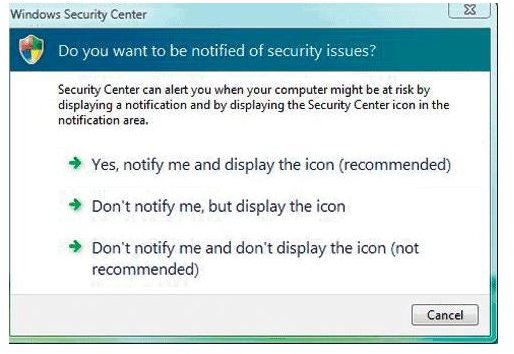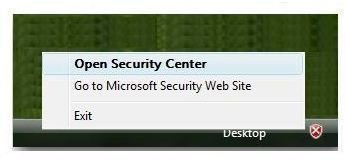Disable Excess Security Features on Windows Vista to Keep Performance Fast & Smooth
Windows Defender and the User Access Control (UAC) are two new security features that come with Vista as part of Windows’ beefed-up shield and defense against malicious software. They are designed to protect your system from attacks that target security vulnerabilities. However, if you have other security utilities installed, disabling the UAC and Windows Defender will help free up system resources. Read on to learn how.
CAUTION
You must never disable either feature unless and until you have reliable applications to replace them.
Tip #9: Turn Off the UAC
The User Account Control (UAC) is a built-in feature of Windows Vista that is designed to minimize potential security breaches by malicious programs. It also helps encourage programmers to write code that is more secure. However, although this feature does increase system security, it can be annoying because it keeps interrupting with pop-up boxes, prompting you for confirmation whenever you do something that will affect system configuration.
The User Account Control (UAC) is a built-in feature of Windows Vista that is designed to minimize potential security breaches by malicious programs. It also helps encourage programmers to write code that is more secure. However, although this feature does increase system security, it can be annoying because it keeps interrupting with pop-up boxes, prompting you for confirmation whenever you do something that will affect system configuration.
- Click on the Vista orb to open the Start menu, and then click on Control Panel
- Click on User Accounts and Family Safety and then User Accounts**. (In classic view, just click on User Accounts****).**
- Click on the link: Turn User Account Control on or off. Click on Continue.
- Uncheck the option: Use . Click on the OK button.
- Click on the Restart Now button when prompted to reboot your computer and enable these changes to take effect.
TIP: To turn the UAC back on, just follow the same steps, but this time, check the “Use User Account Control (UAC) to help protect your computer” option and reboot your computer.
Tip #10: Turn off the Automatic Windows Defender Operation
Windows Defender is a new, free anti-malware application of Vista, which provides real-time protection against malware. If you have a reliable anti-malware application that you prefer to use, disabling this feature can free up system resources and help speed up your system. Here’s how to disable it:
- Click on the Vista Orb to open the Start menu
- Select All Programs, then Click Windows Defender.
- Click on Tools, then click Options.
- Uncheck the Use Windows Defender check box, under Administrator options
- Click Save. Type in your password or provide confirmation if prompted to. And you are done.
Tip #11: Nullify Windows Vista Security Pop-up Notifications
If you choose to use third-party security utilities such as anti-virus and anti-spyware programs, these programs may disable particular components in the Security Center in order to function. Vista will constantly open pop-up alerts informing you that these components have been disabled, as well as let you know if any updates are available. To avoid getting slowed down by these pop ups, you can disable the notifications. Here’s how:
Right click on the tiny red shield icon in the bottom.
Select Open Security Center from the context menu.
Click on the link that reads: Change the way Security Center alerts me.
Select the third option: Don’t notify me and don’t display the icon.

This post is part of the series: 14 Ways to Speed Up Vista
Concluding the series by Dianna Monda Dill, this part brings the final 14 tips to speed up Vista. She’s not exactly saved the best for last, but these are some that power-users, especially, will enjoy.
- 14 Ways to Speed Up Vista - Part 1 - Create a Striped Volume
- Tip 2 & 3: Configure Your Vista Hard Drive For Advanced Performance
- Manually Adjust CPU Priority on Windows Vista
- Optimize or Disable Windows Search Indexing: Vista Tips
- Monitor Resource Usage Regularly on Your Vista Computer
- Use Vista Reliability and Performance Monitor
- Disable Excess Security Features on Windows Vista
- Tweak Windows Vista Network Settings
